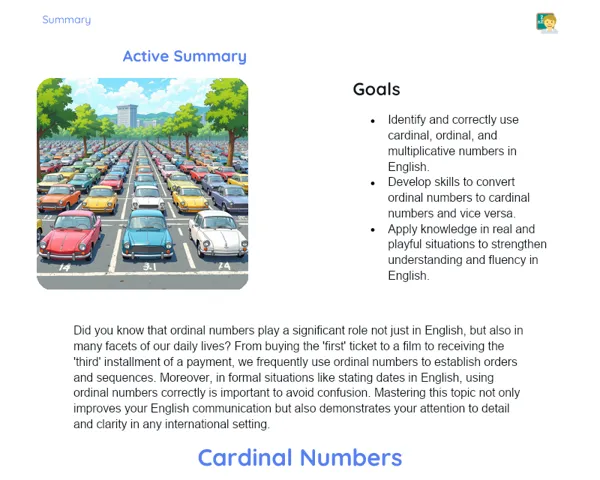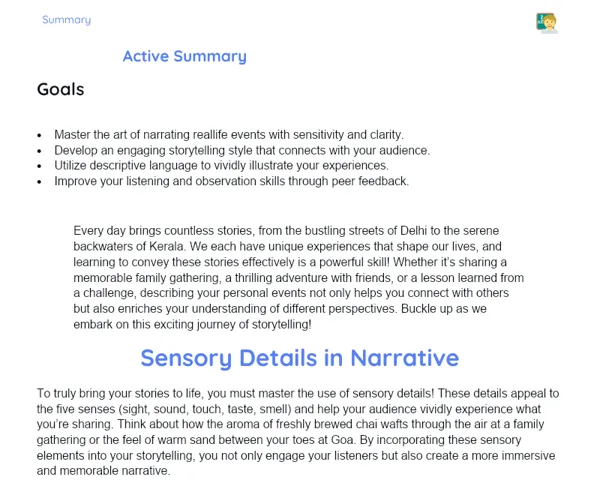Summary Tradisional | Basic Text Interpretation
Contextualization
Text interpretation is a vital skill that enables us to understand and analyze the information presented in written texts. This is a core competency not just for English class, but across all subjects and in our day-to-day lives. When students manage to interpret texts effectively, they absorb information better, appreciate stories, follow instructions, and even enjoy reading novels and comics much more. Moreover, this skill is indispensable for developing critical and analytical thinking, essential throughout students’ academic journey and professional environments.
In today’s lesson, we will concentrate on three primary components of a text: characters, setting, and events. Gaining an understanding of these elements is the first step to becoming a capable reader and proficient text interpreter. Characters are the figures involved in the story, the setting encompasses the location and time in which the story takes place, and events are the happenings that shape the plot. By identifying and analyzing these components, students will find themselves better prepared to respond to questions about the text and to make inferences, enhancing their overall comprehension and reading abilities.
To Remember!
Characters
Characters are the entities that participate in the story. They can be people, animals, or even inanimate objects that can speak and move, depending on the narrative style. Main characters hold significant roles in the plot and are crucial for the progression of events. These characters are frequently mentioned, and their thoughts, dialogues, and actions are elaborated upon throughout the text. Conversely, secondary characters tend to appear less often and play minor roles, yet they are also important for enriching the story.
Understanding the attributes of the characters is key to interpreting the text, as it allows the reader to comprehend their motivations, emotions, and actions. This involves analyzing the physical, psychological, and behavioral traits of the characters. Additionally, the relationships between characters and their interactions are pivotal for developing the plot and advancing the events.
To identify main and secondary characters, one should pay close attention to the descriptions presented by the author and note how often they appear in the text. By observing how the characters are introduced and evolve throughout the story, readers can achieve a deeper understanding of each character’s role in the narrative.
-
Main characters hold significant roles in the plot.
-
Secondary characters enrich the story but usually have smaller roles.
-
Analyze the physical, psychological, and behavioral traits of the characters.
Setting
The setting refers to the location and time where the story unfolds. This element includes descriptions of the physical environment, such as landscapes, buildings, and indoor settings, as well as the time period in which the story occurs—whether it's in the past, present, or future. Understanding the setting contextualizes events and helps in better understanding the actions and motivations of the characters.
The setting can directly influence the plot, either facilitating certain occurrences or presenting challenges for the characters. For instance, a story set in a bustling metropolitan area might highlight conflict and social interaction, while one in a serene village could underscore tranquility and a strong connection with nature. Additionally, the era in which the story is set can shape the events, reflecting cultural norms, technologies, and historical context.
Readers should carefully analyze the detailed descriptions provided by the author to identify and interpret the setting. These descriptions aid in visualizing the environment and understanding how it affects the narrative. Moreover, one must consider how the setting aids in character development and plot progression.
-
The setting includes the location and time of the story.
-
The physical environment and era significantly influence the plot and characters.
-
Detailed descriptions help create a mental image of the setting.
Events
Events are the incidents that comprise the plot of the story. They are essential to the narrative's development and the construction of the storyline. Major events propel the plot forward and significantly impact the characters and the progression of the tale. Secondary events, while less central, still contribute to context-building and character development.
Understanding the sequence and chronology of events is vital for interpreting the text. This requires identifying what happens first, what follows, and how events are interconnected. It's essential to differentiate between main and secondary events, grasping the importance of each to the plot. By doing so, readers can attain a clearer understanding of the story’s structure and the motivations behind characters’ actions.
When analyzing events, readers should pay attention to the characters’ actions and reactions, as well as any changes occurring throughout the narrative. This includes identifying key moments of conflict, climax, and resolution—critical elements in creating an engaging and well-structured story.
-
Events make up the plot of the story.
-
Main events drive the plot and influence characters.
-
The sequence and chronology of events are essential for interpretation.
Inferences
Inferences are conclusions that readers can draw from the information provided in the text, even when this information is not directly stated. They require readers to utilize their prior knowledge and contextual clues to enhance their understanding of the story and its characters. Making inferences is a vital skill in text interpretation, as it helps readers to comprehend subtle nuances and details that may not be evident at first glance.
To make effective inferences, readers must focus on the details supplied by the author, such as descriptions, dialogues, and character actions. These details can give insight into the characters' feelings, motivations, and intentions, as well as forecast future events in the plot. Furthermore, considering the overall context of the story and employing prior knowledge to bridge gaps is crucial.
The practice of making inferences fosters critical and analytical thinking. It allows for a richer understanding of the text and equips readers with the ability to respond to interpretative questions and forge personal connections with the story. Mastering this skill prepares students for tackling more intricate texts in their future studies.
-
Inferences are conclusions drawn from implicit information in the text.
-
Author-provided details assist in making inferences.
-
Drawing inferences enhances critical and analytical thinking abilities.
Key Terms
-
Characters: Entities involved in the story, including their physical, psychological, and behavioural characteristics.
-
Setting: Location and time where the story unfolds, impacting the plot and characters.
-
Events: Incidents that form the plot of the narrative, ranging from major to minor.
-
Inferences: Conclusions drawn from implicit information in the text along with readers' prior knowledge.
Important Conclusions
In today's class, we covered the essential components of text interpretation: characters, setting, and events. An understanding of these elements is fundamental for analyzing and interpreting any text, leading to a richer and more detailed reading experience. Characters are the vital figures in the story, and knowing their characteristics and actions greatly aids in comprehending the plot. The setting, which encompasses both location and time, grounds events and directly influences character actions. Events are the incidents that build the plot, and grasping them is crucial for understanding the sequence and significance of each moment in the narrative.
In addition, we also explored the skill of making inferences—drawing conclusions based on implicit information within the text. This ability is vital for developing critical and analytical thinking, allowing for a deeper appreciation of the text. By practicing the identification of characters, setting, and events while also navigating the process of making inferences, students are amplifying their reading and text interpretation skills—skills that are essential for success, both academically and personally.
Text interpretation transcends mere academic skill; it’s a crucial competence for everyday living. Whether it's understanding instructions or savoring stories, the ability to analyze and comprehend texts is foundational. We encourage students to persist in honing these skills, explore a variety of texts, and delve into different literary genres. Consistent practice will reinforce these skills, prepping them for future academic hurdles and life beyond the classroom.
Study Tips
-
Regularly read various types of texts, such as novels, articles, comics, and instructions. This helps get comfortable with different styles and contexts.
-
Practice identifying the key elements of a text (characters, setting, events) in your readings. Jot down notes on your observations to reinforce your understanding.
-
Make inferences as you read; try to predict what might happen next or better understand character motivations based on contextual hints.


